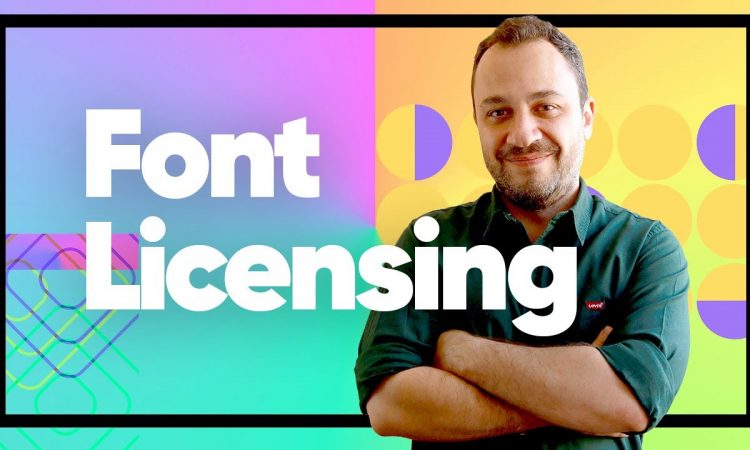Font licensing was created as a means for font creators and foundries to protect their intellectual property. Licensing can also help the creators control how their works are used, as well as provide users with a legal way to obtain the right to use the font.
Font Licenses
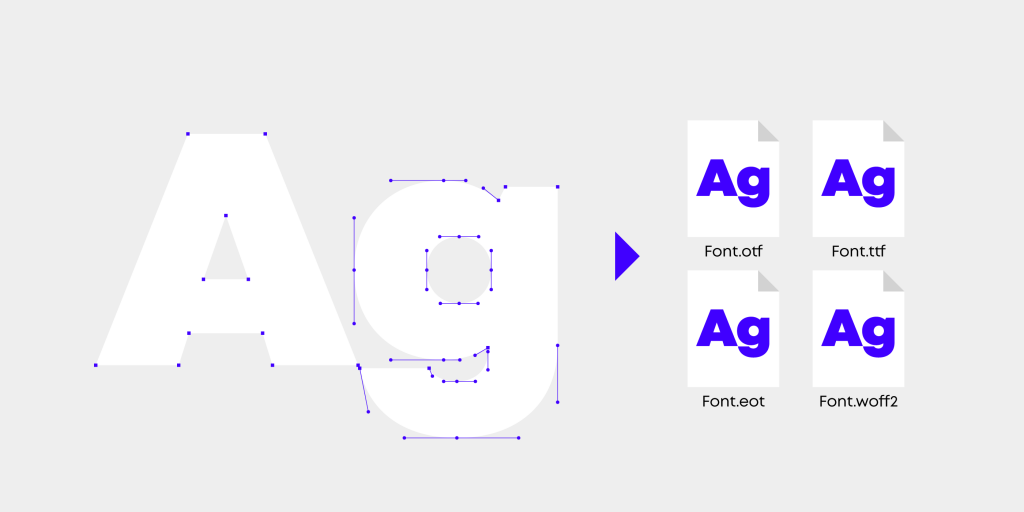
Perhaps, one of the most confusing things about font licensing is that there are tons of them. Each font foundry and marketplace impose its own version of font use license and pricing structures. Generally, licenses can be divided into free and paid.
A free license does not require you to pay for the font to use it for personal or commercial use. However, some restrictions may apply. Typically, free fonts cannot be redistributed or modified unless it has an open-source license. In that case, anyone can use and modify the font, pretty much like open-source software.
Paid licenses, on the other hand, are much more complex. Different usage may require a different type of font license, which sometimes mean different price as well. As we’ve mentioned before, each and every foundry has its own term of use and licensing. However, the repertoire of paid licenses can be divided into several main categories.
Desktop License
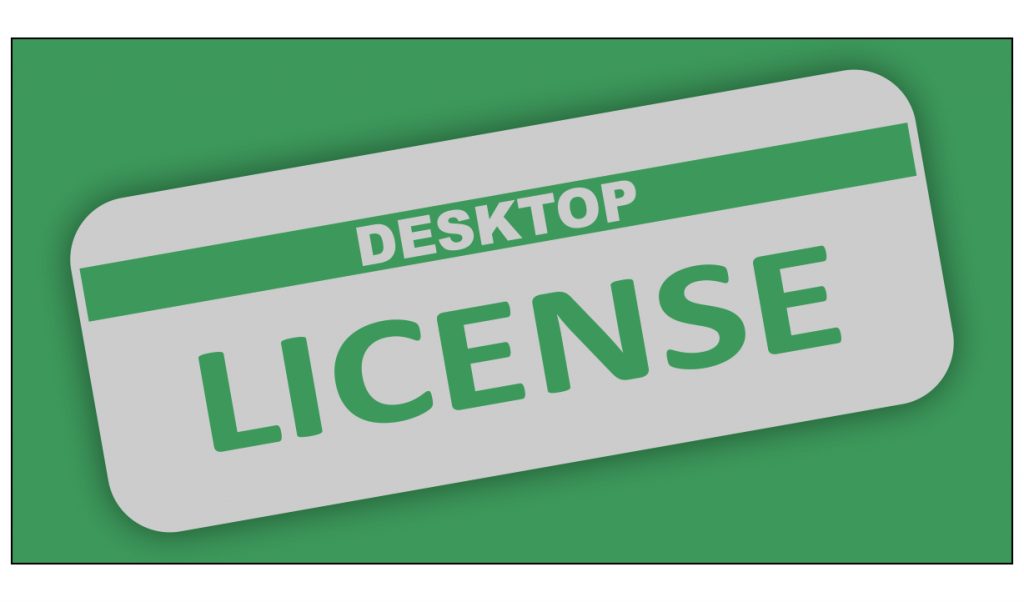
This license treats fonts like other computer software. It allows users to install a font on their computers. Usually, copyright holders limit the maximum number of devices allowed to install the font with a single license. For example, if you get your hands on a desktop-licensed font with a maximum installation of five different devices, you will have to get a separate license purchased for the sixth device.
This is the simplest form of font licensing in the creative industry. However, in terms of usage provided by this license, end-users are generally allowed to use the font for a wide range of offline purposes. Logos, signage, printouts—if you can print it, chances are the license allow you to do so.
This does not necessarily mean you can use the font for commercial uses. Sometimes, copyright holder allows commercial use in a small-scale production or home industry. Most of the time, in order to use the font in a commercial project, you will have to purchase a separate commercial license.
Commercial License
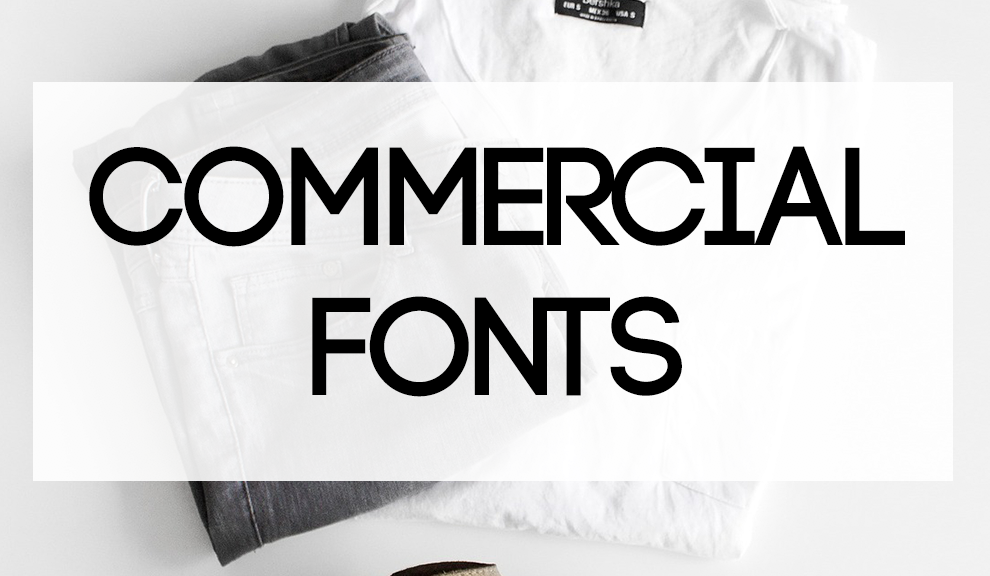
As the name suggests, this license allows end-users to use the font for commercial uses. This typically refers to paid projects for clients, but it usually includes the user’s personal, commercial projects, like merchandise or business logo. To put it simply, a commercial license gives you what a desktop license gives you, but with additional money-making rights.
In recent days, a commercial license is often included with a desktop license. Do note that while this is a common practice, it doesn’t mean every desktop license comes with a commercial license. Check the End-User License Agreement (EULA) to know whether or not you will need to purchase a separate commercial license. Depending on the copyright holder, you possibly have to buy another commercial license for your client as well.
WebFont License
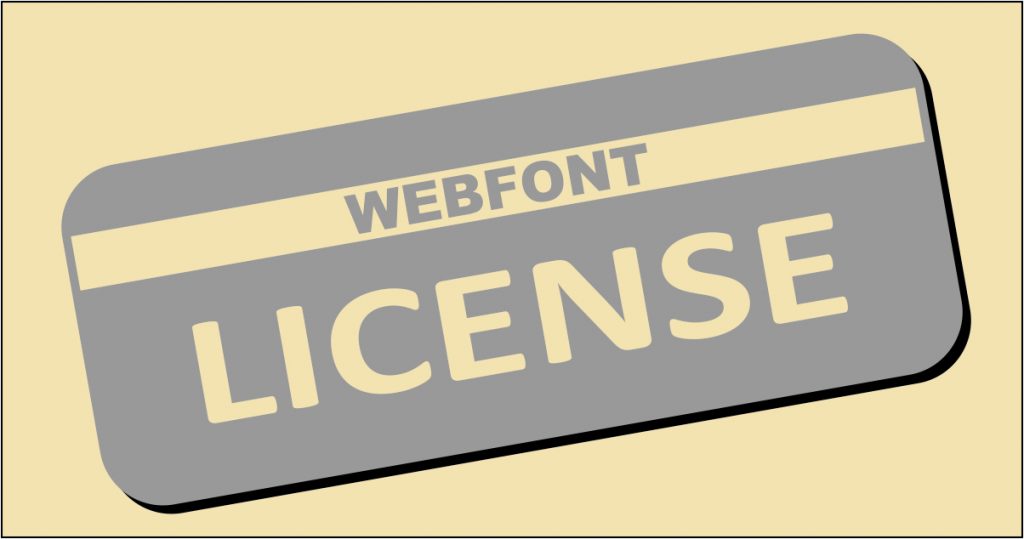
Perhaps, the simplest explanation to describe a web font is that it’s a font for a website, literally. What sets them apart from regular fonts is that web fonts are formatted in such a way that web browsers can accurately render the fonts.
Why? Because web fonts need to be embedded into the website’s code in order to properly display it on the webpage. Usually, this is the case for the site’s text content. A different process is performed for the visual aspect of the website.
The webfont license typically works on a per-view basis, meaning the amount of licensing fee will depend on the monthly traffic of your website. The higher the traffic of your website, the higher foundries will charge you. It is not a one-time payment, either. If your website has fluctuating traffic in the span of 6 months, the license fee will also fluctuate.
Theoretically, you can use web fonts for printed media. Legally, you may or may not use web fonts for printed media. Always double-check the EULA for what you may and may not do with the font.
App License
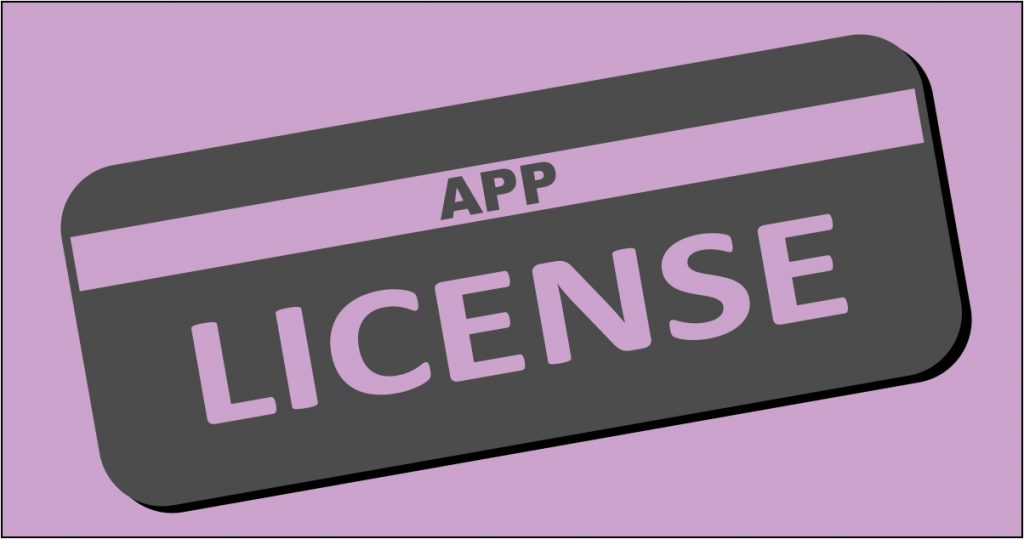
This license works like a webfont license but exclusively for mobile apps. It allows you to embed the font in the app’s main code. Note that you cannot embed a desktop-licensed font for a mobile app as it typically doesn’t allow this usage. Not to mention that app fonts often have different formats than regular fonts.
Some foundries may charge you on a per-view basis. Other foundries will charge you on a subscription-based model. With a per-view basis, the licensing fee is calculated according to the number of active users in a time period, usually monthly. With a subscription-based model, the license will be valid for a period of time and must be licensed again if you want to continue using the font.
For example, you purchased a mobile app license for a font sold by a foundry, and it will be valid for one year. After 10 months, you overhaul your app and replace the embedded font with another one you purchased from another foundry. In this case, you don’t have to repurchase the license of the previous font.
However, if the app overhaul does not require the embedded font to be replaced (or you don’t perform any overhaul at all), then you have to repurchase the license before the 12th-month validity expires. Otherwise, you might have to deal with copyright infringement accusations from the foundry or creator.
Note that an app font license, regardless of how the copyright holder charges you, typically works on a per-app basis. It means you can only use the font for a single app. If you want to use the same font for your other app, you need to obtain a separate license.
Unlimited License
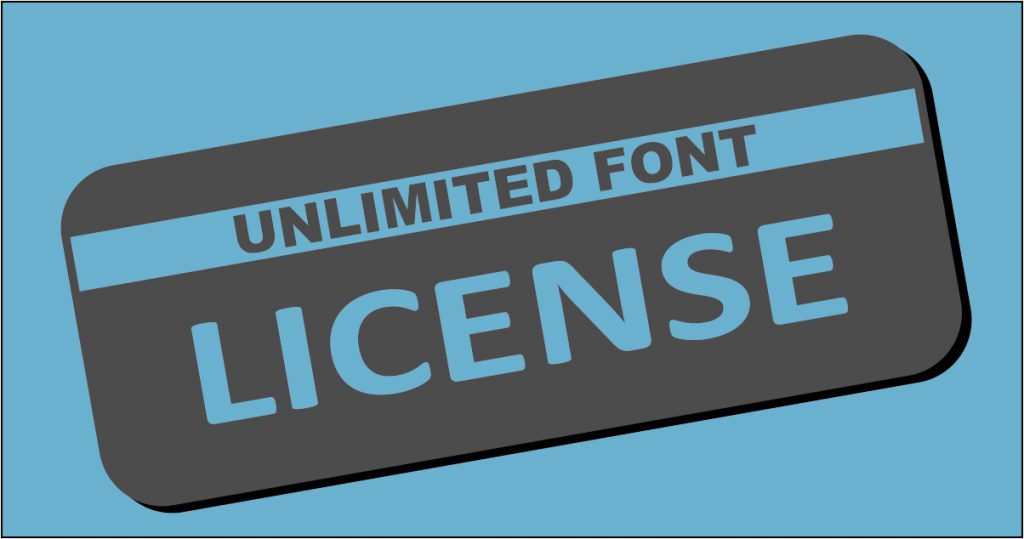
Basically, the license barely had any restrictions on the usage of the font. Usually, this license is granted to a large business that operates in an equally large market. This license allows end users with practically anything they want to do. This includes all the privileges granted by the aforementioned licenses.
You want to use it for marketing purposes? Of course! You want to embed the font into your web and mobile app? Yes, you can! Want to sell merchandise with the font as part of the design? You know what? Just do it!
Due to the scale of privilege given to the holder of this license, they typically cost a lot more. It’s common to see foundries putting a $10,000 price tag on this license. It’s a fair price considering they practically give the license holder some part of the ownership. Unfortunately, the unlimited license is not the highest form of font licensing.
Exclusive License
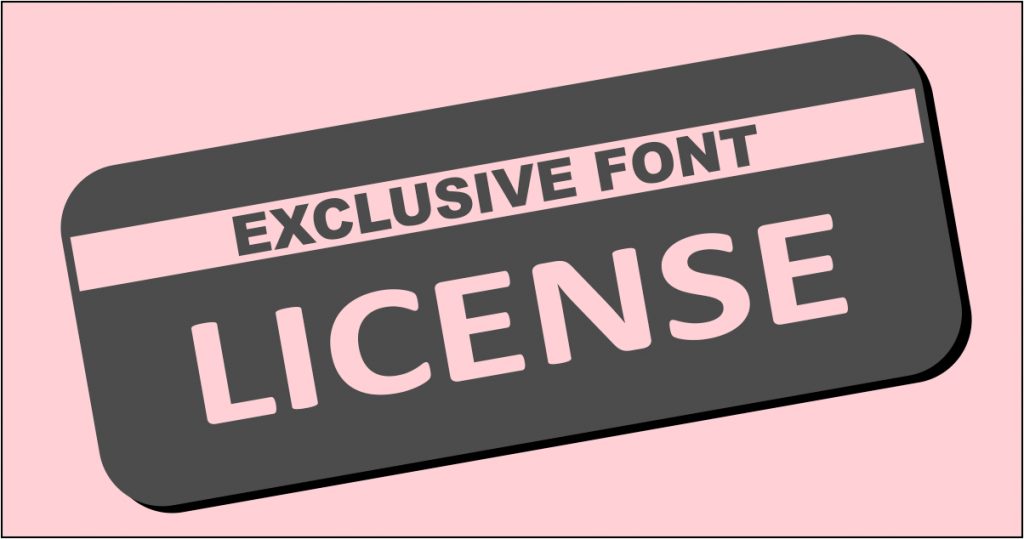
Now, this is the highest form of license a typo foundry or designer may grant to other parties. All the privileges of an unlimited license plus the exclusive right to use the font—no one else is allowed. The way companies or agencies obtain this license is also different than other licenses.
In another type of license, designers make the font first, then sell the license for that font through a foundry or other means. This is kind of like a baker making bread loaves to be sold in supermarkets. The baker or supermarket may charge extra if you want to use the bread for your sandwich stand.
With exclusive licenses, the designer is commissioned to create an exclusive font for them. The commissioning party will usually brief the designer on how they want the font to look like, what the font would represent, and so on and so forth. This is like asking that same baker to make an artisanal bread loaf only you are allowed to buy and consume.
The exclusivity of this license also translates to the amount of money you or your client have to prepare. The exact number often fell under a Non-Disclosure Agreement (NDA), but it’d still make sense if typo designers or foundries charge double—or even triple—the price of their unlimited license considering no one else is allowed to buy the font.
Font Licensing Dos and Don’ts
As with any form of licensing, there are things that you have to pay attention to. If you want to obtain a font license, do the following:
- Double-check the EULA of each license for what you may and may not do. Remember, different foundry allows different usage across different licenses.
- Have a clear understanding of the nature of your project. Is it a personal project? Is it for printing or the web? Is it a client project? Will it generate income? According to the project itself, you may have to purchase multiple licenses for just a single font.
- Consider using free fonts, especially if you’re doing a personal project on a tight budget. If you are doing a client project and the budget is no issue, then you are more than welcome to purchase the licenses you need.
To avoid the potential legal issue, don’t:
- Use the font for a commercial project if your license is not allowing it. If you want to play safe, obtain a commercial or unlimited—or even exclusive—license instead of a desktop, web font, or app license.
- Share or sell your license with a third party, even if it’s your client. Typically, a license is granted to a single party, whether it’s an individual designer or an agency. Unless your EULA permits you to do so, never share or sell your licensed fonts.
The bottom line is that always double-check the EULA, and you are less likely to encounter problems with your font usage.
All in all, font licensing is a complex matter and can be a source of headaches for designers and businesses. That is why familiarizing yourself with at least the basics of font licenses will help you through this confusing matter.
